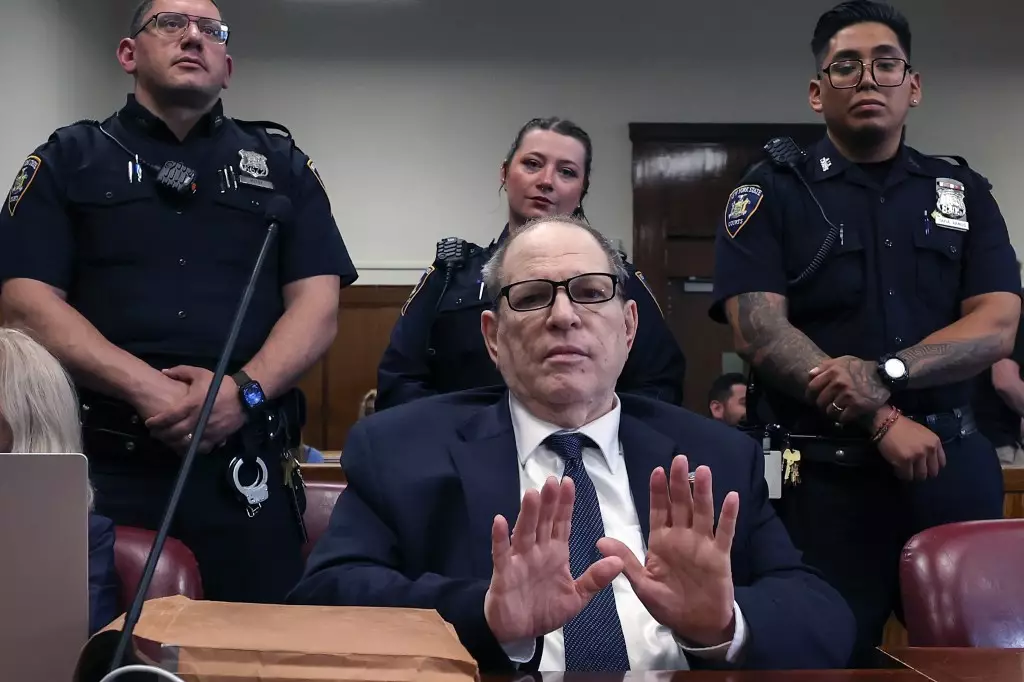In a turn of events reminiscent of a tense courtroom drama, Harvey Weinstein’s legal team has elected not to put their client on the stand in his New York rape retrial. This decision raises eyebrows and invites speculation about the motivations behind it. On one hand, there is the long-standing instinct for a defendant to defend themselves; on the other, the peril of opening the floodgates to overwhelming public and judicial scrutiny. Juda Engelmayer, speaking for Weinstein, claims this is a cautious move rather than a retreat—yet one can’t help but wonder if they are entrenched in a strategy aimed more at mitigating damage than seeking the truth.
Weinstein, facing a plethora of civil suits in the wake of the harrowing exposé by The New York Times in 2017, undoubtedly seeks to manipulate public perception as much as the legal system itself. His exclusion from the witness stand, while seemingly prudent, could also be seen as an admission of weakness—a tacit acknowledgment that the very act of testifying could unravel whatever shreds of credibility remain. In a society where the #MeToo movement has fundamentally reshaped perceptions of sexual power dynamics, this choice might be less about caution and more about survival.
Theatrics of Publicity and the Role of PR
Despite opting out of courtroom testimony, Weinstein appears hell-bent on maintaining a presence in the public eye. His jailhouse interview with controversial media personality Candace Owens feels more like a carefully orchestrated public relations stunt than a genuine appeal for vindication. Claiming that he is “wrongfully accused” while simultaneously appealing to a notion of “justice” that differs between morality and legality paints a disingenuous picture. It seems that for Weinstein, crafting a narrative that positions him as a victim of societal overreach is part of a broader strategy to overshadow documented accounts of his alleged misconduct.
In an age marked by social media fervor and polarized opinions, Weinstein’s team seems intent on navigating the treacherous waters of public sentiment rather than engaging directly with the judicial process. Yet, the question remains: can one successfully manipulate the court of public opinion without appearing utterly desperate? By employing a tactics-driven communication strategy rooted in defensiveness, Weinstein risks deepening the chasm between himself and potential sympathizers—those who might have viewed him as a figure deserving of the presumption of innocence.
Revisiting the Courtroom Dynamics
As the jury in this retrial, comprising seven women and five men, prepares to deliberate, the courtroom dynamics are exuding a pervasive tension that goes beyond mere legalities. The defense, under the guidance of Arthur Aidala, pushes the narrative of a “friends with benefits” arrangement in a bid to diminish the gravity of the accusations against Weinstein. This approach appears to be a strategic error, one that undermines both potential juror empathy and the seriousness of the allegations.
Moreover, regarding Weinstein’s current legal predicament, it is essential to consider the implications of his previous convictions and the political maneuverings surrounding them. At 73, Weinstein is no stranger to legal setbacks, yet the circumstances of his retrial reveal an unsettling reality: the justice system often reflects the unequal power dynamics of society. The appointment of a new judge following political pressure is indicative of a legal landscape that is heavily influenced by connections and reputation rather than the indisputable facts at hand.
The Weight of Imprisonment and Public Sentiment
With Weinstein enduring a lengthy sentence stemming from his first trial and additional charges weighing on him, one must ask whether he truly grasps the gravity of his situation. The disparity between the criminal justice experience of the wealthy and that of the average individual paints a grim picture of systemic bias. This imbalance warrants reflection on the broader implications of wealth in navigating justice—not only for Weinstein but for countless others who find themselves at the mercy of a system that often seems more interested in maintaining the status quo than delivering genuine accountability.
What remains painfully evident is that Weinstein’s choices—both legal and personal—do not exist in a vacuum but represent a larger tapestry of societal discourse surrounding accountability, consent, and power. As the jury deliberates, the outcome of this retrial has the potential to send ripples through the continued quest for justice in sexual assault cases, leaving in its wake a society that grapples with the unresolved tensions between privilege, morality, and the rule of law.


Leave a Reply